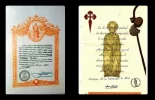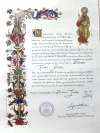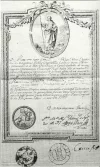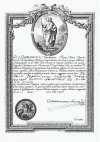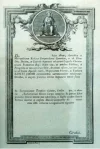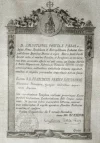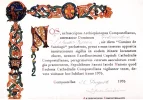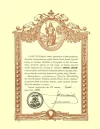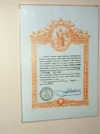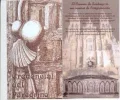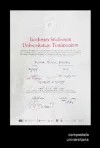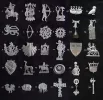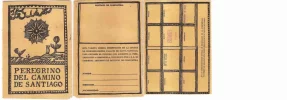sillydoll
Veteran Member
- Time of past OR future Camino
- 2002 CF: 2004 from Paris: 2006 VF: 2007 CF: 2009 Aragones, Ingles, Finisterre: 2011 X 2 on CF: 2013 'Caracoles': 2014 CF and Ingles 'Caracoles":2015 Logrono-Burgos (Hospitalero San Anton): 2016 La Douay to Aosta/San Gimignano to Rome:
There are a number of certificates pilgrims can earn on the Camino Frances.
1. The COMPOSTELA: based on a 14th c document which has changed many times, with long periods where it was not issued, especially in the modern era. To earn this certificate you must walk the last 100 km to Santiago and you must attest to having walked for religious or religious/spiritual reasons. If you don't tick one of those two you can ask for the other, Tourist certificate. Walking 5000 miles doesn't count towards a Compostela; the Cathedral fathers make it clear that mere walking, or going on a long hike is not the goal. Walking to the tomb of the Saint and revering the remains are the goal, and you only need to do 100 km to earn the Compostela. If you can't prove that you have walked the last 100 km you won't get a Compostela. This rather arbitrary mileage was introduced in 1999 to ensure some 'suffering and effort' on behalf of the pilgrim. You will need 2 stamps per day in your pilgrim passport on the last 100 km. Where you start on the last 100 km is also important. You can't start walking from any 100 km road marker and hope to earn a Compostela. It needs to be from an identifiable Camino route. A few years ago there was much debate when people started arriving at the cathedral having walked the Invierno route and the staff didn't recognize the route.
Ferrol – 118 Camino Ingles
Lugo – 101 Camino Norte
Sarria – 114 Camino Frances
Tui – 117 Portuguese Caminho
Ourense – 108 V de la Plata
2. The TOURIST certificate is given to those who walk for cultural, sporting or any reason other than religious or spiritual. [IMHO it is just as attractive as the Compostela]
3. HALFWAY certificate: You can get this in Sahagun at the Sanatorio de Virgen Peregrino church for €3 which includes visiting the museum.
4. DISTANCE certificate: If you walked more than 100 km and you'd like some recognition for your long, hard trek, you can ask for a distance certificate (€3) at the pilgrim office.
5. CATHEDRAL certificate: The Cathedral of Santiago offers all those who visit the Basilica of St. James a Certificate of Visit that provides evidence of the stay in the Cathedral. This document, which costs 3 euro, can be ordered at the headquarters of the Confraternity of St. James, at the praza da Quintana, by the Holy Door. The certificate, printed on parchment paper, is personal, and is decorated with an image of the Apostle of the Portico de la Gloria and a detail of the Breviary of Miranda.
6. FISTERANA: issued at the albergue in Finisterre. You must have at least 3 stamps in your pilgrim passports.
7. MUXIA certificate: issued at the albergue in Muxia, you will need to have a stamp at Linares.
(I tried to post photos here but each one resulted in an error message)
1. The COMPOSTELA: based on a 14th c document which has changed many times, with long periods where it was not issued, especially in the modern era. To earn this certificate you must walk the last 100 km to Santiago and you must attest to having walked for religious or religious/spiritual reasons. If you don't tick one of those two you can ask for the other, Tourist certificate. Walking 5000 miles doesn't count towards a Compostela; the Cathedral fathers make it clear that mere walking, or going on a long hike is not the goal. Walking to the tomb of the Saint and revering the remains are the goal, and you only need to do 100 km to earn the Compostela. If you can't prove that you have walked the last 100 km you won't get a Compostela. This rather arbitrary mileage was introduced in 1999 to ensure some 'suffering and effort' on behalf of the pilgrim. You will need 2 stamps per day in your pilgrim passport on the last 100 km. Where you start on the last 100 km is also important. You can't start walking from any 100 km road marker and hope to earn a Compostela. It needs to be from an identifiable Camino route. A few years ago there was much debate when people started arriving at the cathedral having walked the Invierno route and the staff didn't recognize the route.
Ferrol – 118 Camino Ingles
Lugo – 101 Camino Norte
Sarria – 114 Camino Frances
Tui – 117 Portuguese Caminho
Ourense – 108 V de la Plata
2. The TOURIST certificate is given to those who walk for cultural, sporting or any reason other than religious or spiritual. [IMHO it is just as attractive as the Compostela]
3. HALFWAY certificate: You can get this in Sahagun at the Sanatorio de Virgen Peregrino church for €3 which includes visiting the museum.
4. DISTANCE certificate: If you walked more than 100 km and you'd like some recognition for your long, hard trek, you can ask for a distance certificate (€3) at the pilgrim office.
5. CATHEDRAL certificate: The Cathedral of Santiago offers all those who visit the Basilica of St. James a Certificate of Visit that provides evidence of the stay in the Cathedral. This document, which costs 3 euro, can be ordered at the headquarters of the Confraternity of St. James, at the praza da Quintana, by the Holy Door. The certificate, printed on parchment paper, is personal, and is decorated with an image of the Apostle of the Portico de la Gloria and a detail of the Breviary of Miranda.
6. FISTERANA: issued at the albergue in Finisterre. You must have at least 3 stamps in your pilgrim passports.
7. MUXIA certificate: issued at the albergue in Muxia, you will need to have a stamp at Linares.
(I tried to post photos here but each one resulted in an error message)
Last edited:









